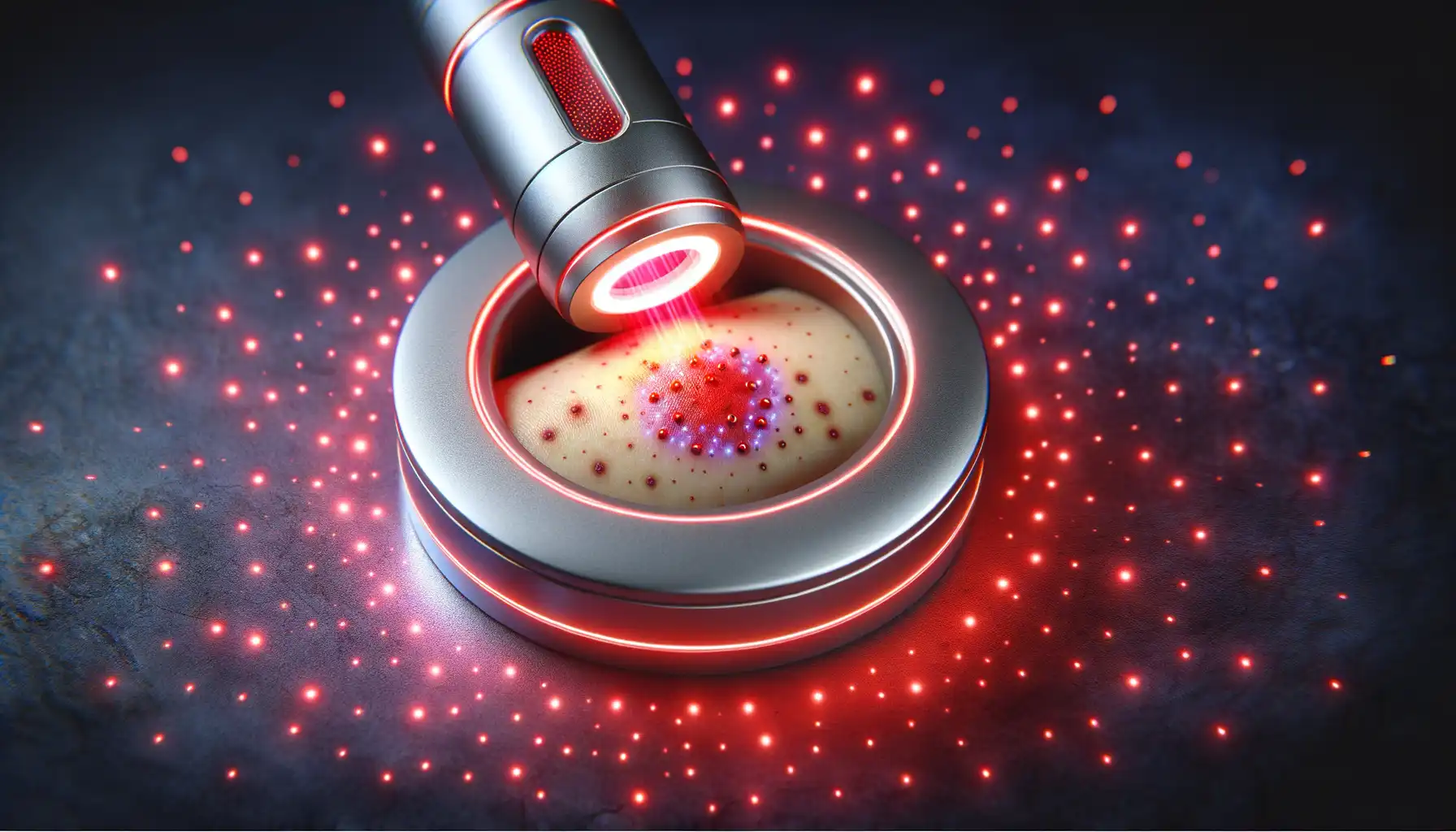Infrared sauna therapy is gaining attention not just for relaxation, but for its potential to actively support recovery. This isn't about magic; it's about science. By using specific wavelengths of light, infrared saunas can create a deep, gentle heat that works with your body’s own healing mechanisms.
This post will explore how infrared sauna therapy can help accelerate wound healing. We’ll look at the science behind how it works, what makes it different from a traditional sauna, and how you can use it safely to aid your recovery journey.
How Infrared Saunas Support the Healing Process
When your body has a wound, it kicks off a complex four-stage healing cascade: hemostasis (stopping bleeding), inflammation (cleaning the area), proliferation (rebuilding tissue), and maturation (strengthening the new tissue). Infrared sauna therapy can positively influence several of these stages, primarily by enhancing circulation, reducing inflammation, and stimulating cellular energy production. For more about the science and therapeutic benefits of infrared sauna therapy, see this summary from the Harvard Health Publishing.
Boosting Circulation and Oxygenation
Proper blood flow is the foundation of healing. Your blood is the delivery service for everything your tissues need to repair themselves, including oxygen, nutrients, and immune cells. Poor circulation can significantly slow down recovery.
This is where infrared heat excels. Unlike traditional saunas that heat the air around you, infrared saunas use light to heat your body directly. This raises your core body temperature and triggers a cardiovascular response similar to light exercise.
Your heart rate increases.
Your blood vessels dilate (widen).
This process, known as vasodilation, improves blood flow throughout your body, including to the damaged tissues at the wound site. Enhanced circulation delivers a fresh supply of oxygen-rich blood, which is vital for creating new cells and tissue. One key player in this is nitric oxide, a molecule that helps relax the inner muscles of your blood vessels. Studies, including this article from the study published in the Journal of Applied Physiology on the role of heat therapy and nitric oxide, have shown that heat therapy can increase nitric oxide production, directly contributing to better blood flow.
Reducing Inflammation and Managing Pain
While the initial inflammatory response is a necessary part of healing, chronic or excessive inflammation can be counterproductive. It can cause pain, swelling, and can even stall the repair process.
Infrared sauna therapy helps modulate this inflammatory response. The deep-penetrating heat increases circulation, which helps flush out inflammatory byproducts from the injured area. At the same time, it can stimulate the release of your body's natural pain-killers, like endorphins, providing gentle relief without medication.
Furthermore, a specific type of protein called Heat Shock Proteins (HSPs) are produced in response to cellular stress, such as the gentle heat from an infrared sauna. These proteins play a protective role, helping to reduce oxidative stress and regulate inflammation, creating a better environment for healing.
Powering Your Cells for Repair
Think of your cells as tiny factories. To rebuild tissue, they need energy. This cellular energy comes in the form of a molecule called adenosine triphosphate (ATP), which is produced in the mitochondria—the powerhouses of your cells.
Near-infrared wavelengths, in particular, are known to be absorbed by mitochondria. This absorption can stimulate them to produce ATP more efficiently. With more energy, your cells can perform their repair functions more effectively:
Fibroblasts (cells that create connective tissue) can produce more collagen.
Keratinocytes (skin cells) can migrate and multiply faster to close the wound.
This boost in cellular energy helps speed up the proliferation phase of wound healing, where new tissue is built.
Collagen Synthesis: The Scaffolding of New Skin
Collagen is the most abundant protein in your body and acts as the structural framework for your skin and other tissues. When you have a wound, your body needs to produce new collagen to form the scar tissue that closes the gap.
Near-infrared light has been shown to directly stimulate fibroblast cells, the very cells responsible for making collagen. By energizing these fibroblasts and providing them with the oxygen and nutrients they need through increased blood flow, infrared therapy can support a more robust and organized collagen structure. This not only helps the wound close faster but may also lead to a stronger, more flexible scar.
Infrared Saunas vs. Other Therapies: What's the Difference?
The world of wellness technology can be confusing. Let’s clarify how infrared saunas differ from other common therapies.
Traditional Saunas
A traditional sauna (like a Finnish sauna) heats the air around you to very high temperatures, usually between 150-195°F (65-90°C). This hot air then heats your body from the outside in. It’s a great way to sweat and relax, but the heat doesn't penetrate as deeply. Infrared saunas operate at a much lower, more comfortable temperature—typically 120-150°F (49-65°C)—because they heat the body directly with infrared light, allowing for longer, more comfortable sessions and deeper therapeutic effects.
Red Light Therapy Panels
You may have also heard of red light therapy (RLT), which often uses panels or wands. RLT specifically uses visible red light and some near-infrared wavelengths. It is highly targeted and doesn't produce significant heat. It’s excellent for skin-surface issues and mitochondrial stimulation. An infrared sauna is a full-body experience that combines the benefits of near, mid, and far-infrared wavelengths while also inducing a deep, healing sweat and significant circulatory boost. While RLT is like a focused spotlight, an infrared sauna is more like a full-body immersion in therapeutic light and heat.
A comprehensive review published in the journal Photobiomodulation: Mechanisms and Applications details the cellular mechanisms of photobiomodulation, the process by which light affects cell function, which underlies both RLT and infrared sauna therapy.
Practical Guide to Using an Infrared Sauna for Wound Healing
Ready to give it a try? Here’s how to approach it safely and effectively.
Who Might Benefit?
Infrared sauna therapy can be a supportive tool for individuals with:
Post-surgical incisions: To support tissue repair and reduce scarring.
Minor cuts and scrapes: To accelerate the natural healing process.
Sports injuries: Such as strains and sprains where tissue repair is needed.
Chronic wounds (with medical supervision): Such as diabetic ulcers, where improved circulation is critical.
Session Frequency and Temperature
Consistency is more important than intensity.
Frequency: Start with 2-3 sessions per week. You can gradually increase this as your body adapts.
Duration: Begin with shorter sessions of 15-20 minutes. You can slowly work your way up to 30-40 minutes.
Temperature: A good starting range is 120-130°F (49-54°C). The goal is to work up a good sweat without feeling overheated or uncomfortable. Remember, higher heat doesn't always mean better results with infrared.
Pre- and Post-Sauna Tips
Hydrate, Hydrate, Hydrate: This is the most important rule. Drink plenty of water before, during, and after your session. Adding an electrolyte powder can help replenish minerals lost through sweat.
Go in Clean: Take a quick shower beforehand to wash off any lotions or oils, which can block the infrared rays from penetrating your skin.
Listen to Your Body: If you feel dizzy, lightheaded, or unwell at any point, end your session immediately.
Cool Down Naturally: After your session, let your body cool down for a few minutes before hopping into a shower. A lukewarm shower is often better than a cold one, as it won't shock your system.
Safety First: Important Considerations
While generally safe for most people, infrared sauna use is not for everyone. It's essential to approach it with awareness.
Disclaimer: This information is for educational purposes only and is not a substitute for professional medical advice. Always consult with a qualified healthcare professional before beginning any new health regimen, especially if you have a medical condition.
Be sure to speak with your doctor before using an infrared sauna if you have any of the following:
Cardiovascular Issues: Including unstable angina, recent heart attack, or severe aortic stenosis.
Pregnancy: The effects of increased core body temperature on fetal development are not well understood.
Certain Medications: Some drugs can impair your ability to sweat or may cause you to overheat.
Acute Injury: Do not apply heat to a fresh injury (within the first 24-48 hours) that is swollen, as it can increase inflammation. Wait until the acute swelling has subsided.
Implants: Surgical implants (metal, silicone) typically reflect infrared heat and are not heated. However, it's always best to check with your surgeon.
For more detailed safety information, resources from organizations like the World Health Organization (WHO) – Electromagnetic Fields and Public Health can provide context on electromagnetic fields, although consumer saunas are designed to operate well within safe limits.
Wrapping It Up: A Warm Path to Recovery
The journey of healing is a marathon, not a sprint. Your body is doing incredible work to repair itself, and incorporating tools like an infrared sauna can provide valuable support. By enhancing circulation, calming inflammation, and fueling your cells with energy, infrared therapy creates an optimal internal environment for accelerated tissue repair.
It offers a gentle, non-invasive way to become an active participant in your own recovery. When used thoughtfully and safely, it’s more than just a relaxing escape—it's a proactive step toward getting you back on your feet, faster.



